
With the
holiday blowout over, it's a great time for diet and detox. Charlotte
Watts reviews the essential role of movement in detoxification
processes, and which moves work best.
If
you are making changes to your nutritional habits for the new year,
it's vital that you include specific movements to maximize your ability
to fully rid yourself of the waste that builds up.
Every
day our bodies are bombarded with toxins from both outside the body
(exotoxins)—the polluted environment, medications, alcohol, cigarette
smoke, car exhaust emissions and so on—as well as from toxins within it
(endotoxins)—the byproducts of nutrient breakdown, hormones and
bacterial waste products from the intestines.
The
liver is not the only organ of detoxification. Quite the contrary,
every cell in your body is cleaning its own house every nanosecond that
you're alive. However, all of the body's systems depend to some extent
on the detoxifying function of the liver. In fact, one of the greatest
common misunderstandings about the liver is that we only need to support
it when we drink alcohol.
We
live in an industrialized, polluted society, so liver support is a good
insurance policy to support complete health. When we're stressed, we
run all systems at a higher rate, and it's the liver that must deal with
the breakdown products of increased energy production.
Cellular
waste products will make their way to the liver to be processed and
finally ejected, so all parts of the journey need support, including the
circulation, skin and lymph glands. Eventually, toxins are chemically
broken down in the liver, and their waste products are eliminated
through the kidneys and colon.
The
lungs also play their part, filtering the air we breathe before the
oxygen is absorbed and directed to cells, organs and muscles. Skin is
our largest organ and the second most important for detoxification after
the liver, which is why when the liver is struggling, we may see skin
issues or dullness, as well as possible bloating, digestive issues, food
intolerances or headaches.
Sweating
is one of the processes involved in detoxifying waste products, so the
increased breathing rate and sweating achieved with exercise help to
promote efficient detoxification.
Research
has shown that exercise supports detoxification by increasing stores of
the body's major antioxidant enzyme glutathione peroxidase. This is
produced in the liver, where it's involved in liver detox pathways and
protects cells from damage, as well as other physiological processes
including fat transport and metabolism.
Glutathione
is also known to play a role in DNA synthesis and repair, the synthesis
of proteins and chemical signaling molecules, amino acid transport and
enzyme activation, so it can indirectly influence every system in the
body, especially the immune, nervous, gastrointestinal and respiratory
systems.
In one study, exercise training was shown to increase glutathione peroxidase by 50-70 percent to protect cells.1
In fact, all liver functions besides detoxification—metabolism and
signaling for fat storage and efficient energy usage in the body—have
been shown to increase with exercise (as reflected by gene expression
changes) as a defensive response to this 'good' stress.2
When making nutritional or other changes for a detox, it's vital to support liver function.
This allows it to process any backlog coming through via the bloodstream.
When
the liver is overloaded by too much, too soon, whether through stress
or compromised function, it's usually a sign that the detoxification
processes need support. When toxins can't move through these pathways to
be broken down and excreted via the bile, they can back up into the
portal vein, the main source of blood to the liver.
From
there, they can return to the bloodstream, often more toxic than when
they went in, as they are now partially broken down and potentially more
reactive.
This
is when the negative symptoms of a 'detox' are experienced, such as
fatigue, headaches, irritability, skin breakouts or other inflammatory
flare-ups. It used to be believed that such a 'healing crisis' was a
good sign of increased detoxification, but we now recognize that
overloading the system in such a way is potentially harmful, as toxic
metabolites come into contact with tissues and cells. Helping the
process with mindful movement, hydration, nutritional and herbal liver
support, and rest can ease the burden on the body.
We
are designed for continual movement, and without a certain level of
spontaneous activity, many bodily functions struggle to come to their
full capacity. Movement manipulates our lymphatic system, the network of
lymphatic fluid, and delivers foreign and toxic agents to lymph nodes
in the groin, chest, neck and other sites, where they are killed and
destroyed.
Unlike the blood, for which the heart acts as a pump, lymph can't move unless we do—sedentary habits mean stagnation of lymphatic fluid, with compromised detoxification and immunity. That's why a sedentary lifestyle can leave us feeling sluggish, stagnant and as though we're 'stewing in our own juices.' Here are some movements that can help.
Meditation on movement
This is an example of a kriya
(meaning action, effort)—a cleansing practice used in the kundalini
yoga system to move energy through the body, detoxify and clarify,
including out through the skin. The continual movement through the arms
and shoulders while lifting upright helps lymphatic drainage at the
collarbones. You can gradually build up to continuing the motion for
three minutes, so you don't add tension to your shoulders. This is a
helpful practice for detox programs as it provides an alternate deep
sensation when cravings for foods or substances arise.

1)
Sit in a supported upright position, on a chair is good for many, or at
least on one block (two is best) to raise the hips easily above the
knees and lift up through the pelvis. Spend a few moments settling into
your breath and releasing your shoulders, moving into them if you need.
2) Bring your fingertips onto your shoulders and lift your elbows in toward your ears on an inhalation.
3)
Open your elbows out and extend your arms (just above shoulder height)
on the exhalation. Feel the motion supported by your belly and side ribs
rather than lifting the shoulders. Keep this motion following the
breath, allowing the exhale to reach its endpoint and stopping to rest
if you feel agitation.
4) Breathe fully into long, releasing outbreaths to ensure a relaxed face and jaw throughout the movement—the exhalation naturally releases toxins and waste products such as carbon dioxide, but can be shortened by the stress response or habits of shallow breathing.
Sequence for fascial fluidity
Keeping
fluidity and hydration through the connecting tissues of the fascia—the
web that holds the whole body in suspension—allows proper removal of
what are often termed 'toxins,' but are really the byproducts of energy
production within each cell.
This
sequence adds pulsing micro-movements within larger held positions to
nourish fascia and optimize flow through points where interruptions
prevent full detoxification.
It
also incorporates twisting motions; twists are often said to 'wring out
toxins,' as they pull and compress onto opposite sides of spiral
fascial lines (connective tissue) across the torso as we move each way.
This stimulates organs, glands and
tissues that all play roles within detoxification, repair and exchange
of nutrients, as well as rerouting the flow of bodily fluids.
1)
Start on all fours to simply explore movement through the shoulders and
hips, pelvis and abdomen. Move in any way that feels right, and let
yourself fully breathe to respond to areas where tension may be held.
2)
With open palms, tuck your toes under and lift the knees to raise up
your bottom. As you press back and up from the hands, bend the knees to
move into the lower back and hips, creating 'figure eight' movements
through the hips and shoulders.

3)
Bring the knees back down, exhale the left knee in toward the chest,
and bring the head in to meet it, fully rounding the back to curl in.
4)
As you inhale, lengthen the left leg out behind you, flexing the foot.
Lengthen all the way from the crown of the head to that foot, gathering
in the lower ribs to support where the top and bottom body meet. Follow
these motions for 10-20 repetitions, guided by the rhythm of your
breath.

5)
Come to a downward-facing dog, with hips lifted high—staying open in
the chest and rooting down to the ground through the base of the index
fingers. Drop the knees and move the right leg in the previous motion.
6)
From downward-facing dog, step the left foot between the hands (or come
through all fours) so that the foot is parallel to the outside of your
mat, feet hip-width apart. Raise the torso and arms to come into a low
lunge, opening the arms as wide as you need to soften the shoulders and
lift the chest.
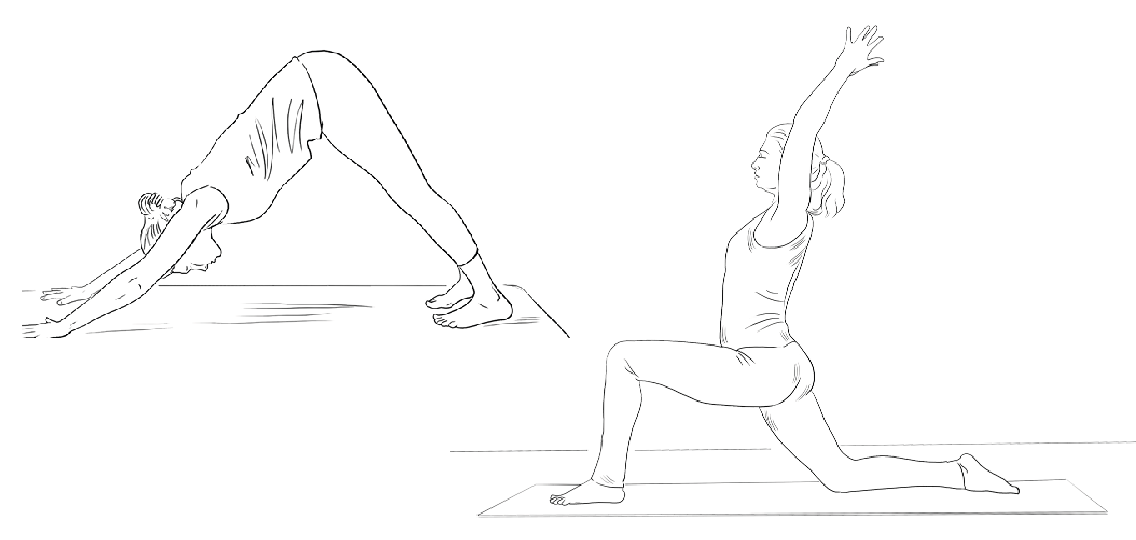
7)
Place the right hand on the ground (or raised on blocks) underneath
that shoulder. From here you have the option to tuck under the toes of
the left foot and lift that knee off the ground. You can then rotate
your belly to come into a twist to either raise the left arm or bring
the left hand onto the back of the pelvis.
8)
You then have the option to come into a deeper twist, bringing the
right elbow over the inside of the left knee with hands together at the
heart. Open the chest so the elbows and shoulders can drop.

9) Come back to downward-facing dog before moving to the other side.
10)
Step your feet in toward your hands to curl up slowly to standing.
Holding your gaze on one spot, raise your left knee in toward your chest
as you raise the right arm to the ceiling.
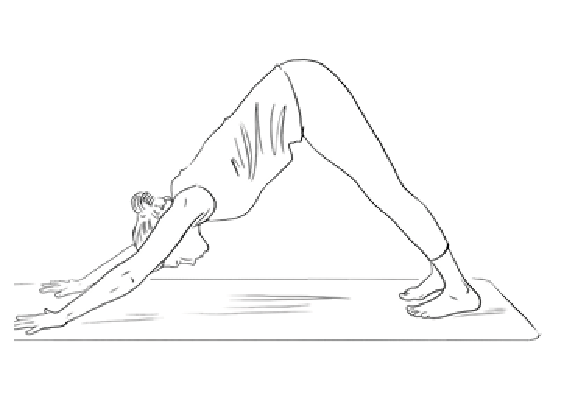
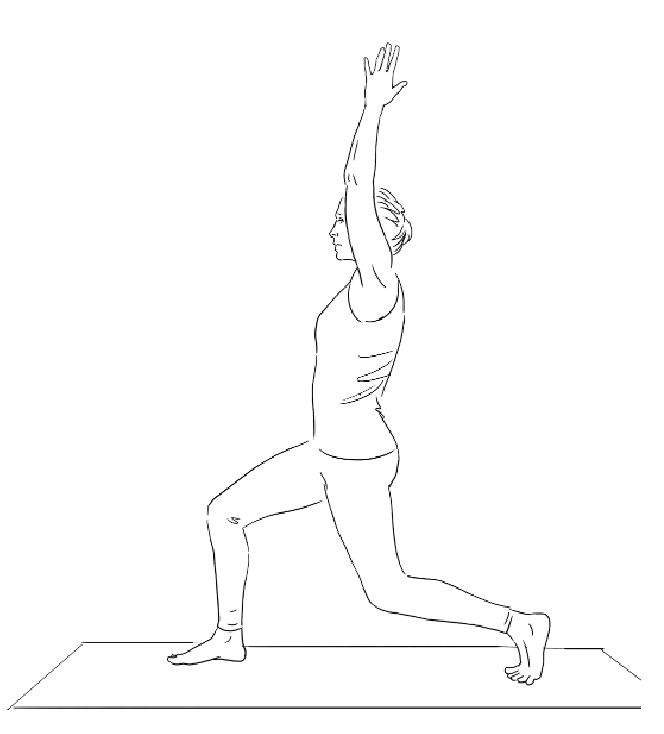
11) Step the left leg back into a high lunge and move between lifting the leg and stepping back 10 times.
12)
Then, after stepping back into the lunge, when you bring up the left
knee, rotate at the belly to twist and hold the left knee with the right
hand as you swing the left arm out behind you. Release the arms back
and rotate back to the center and step back, moving between these two
motions 10 times. Move to the other side and then stand quietly to let
your breath relax.
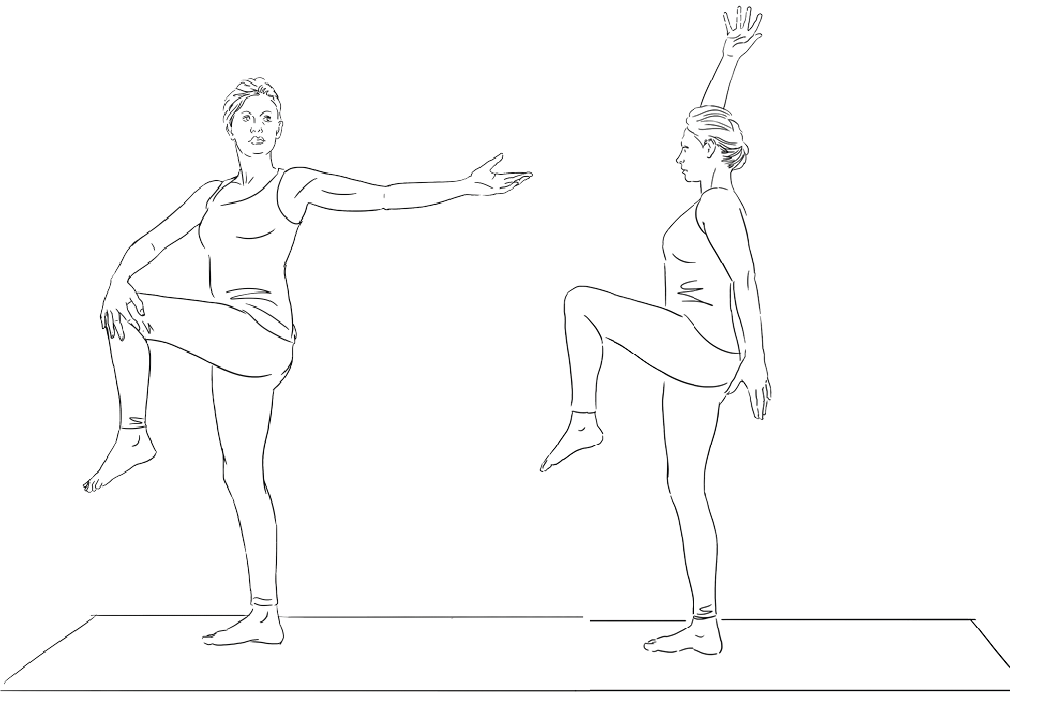
Inversions
Turning
our whole world upside-down not only gives us a new perspective, but
also increases lymphatic flow from the lower body up through gravity,
for easier movement of toxins for elimination.
Supported
inversions add an extra calming dimension, as they allow the heart and
nervous system to come to rest and strengthen the tone of the
parasympathetic nervous system, where repair, healing and detoxification
can occur. Any tension held in the diaphragm can also be released,
helping breath patterns and the downward motion that allows full
elimination of toxins via bowel movements.
The
version shown here—a bridge pose over a bolster or stack of folded
towels, with legs on a chair—fully inverts the body and is a helpful
respite if you are feeling the effects of detoxification, particularly
headaches, insomnia or agitation. Stay in this position for 5-10 minutes
at the end of a physical practice or simply when you need to.
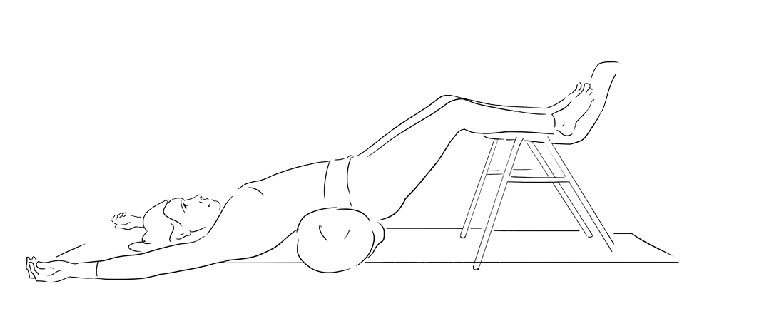
Click Here For More Articles
Don't forget to opt-in to Our Healthy Living Society and get 3 free gifts while receiving the latest information on health, well-being and groundbreaking news about natural nutrition.

No comments:
Post a Comment